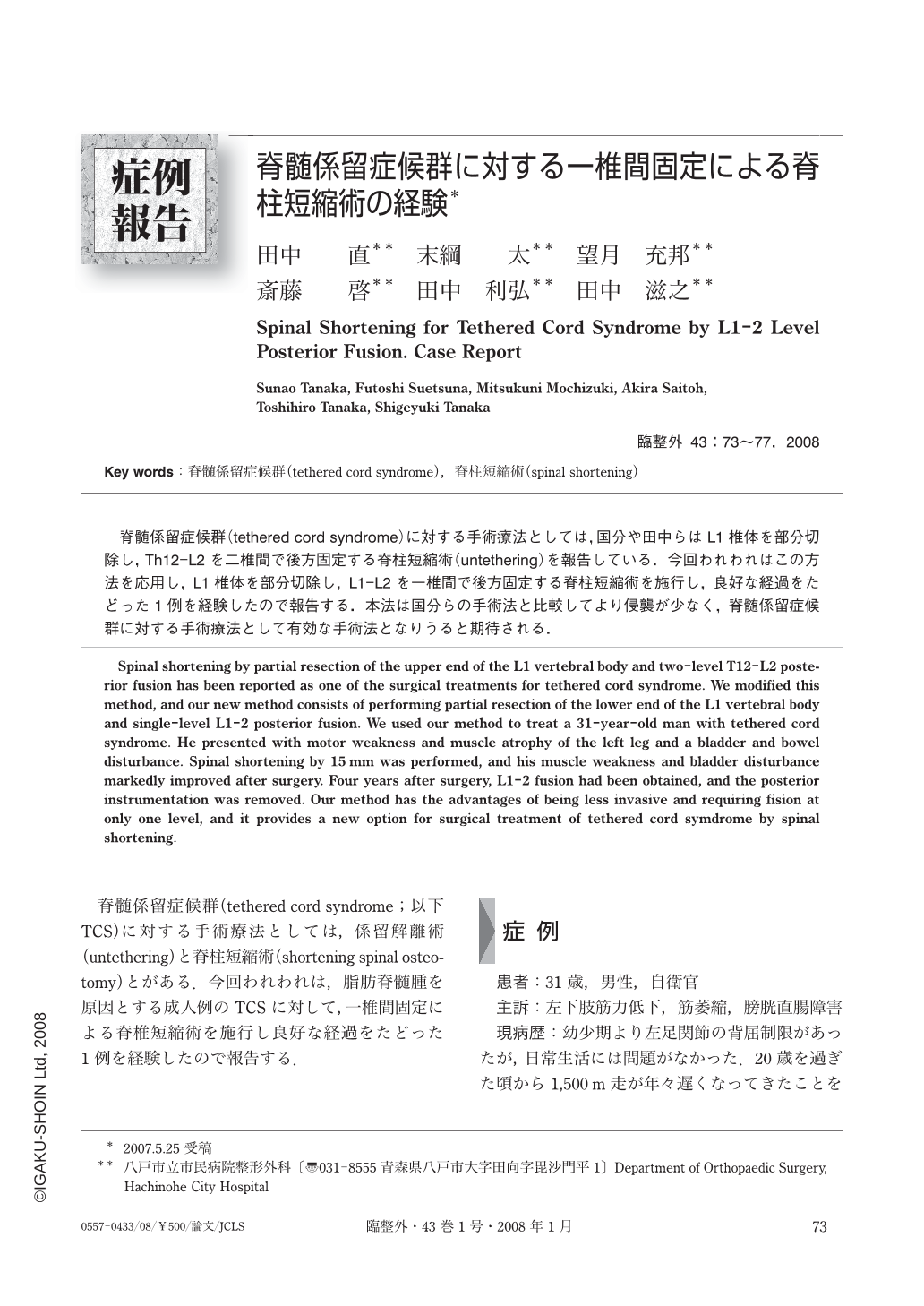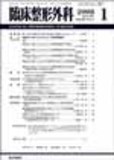Japanese
English
- 有料閲覧
- Abstract 文献概要
- 1ページ目 Look Inside
- 参考文献 Reference
脊髄係留症候群(tethered cord syndrome)に対する手術療法としては,国分や田中らはL1椎体を部分切除し,Th12-L2を二椎間で後方固定する脊柱短縮術(untethering)を報告している.今回われわれはこの方法を応用し,L1椎体を部分切除し,L1-L2を一椎間で後方固定する脊柱短縮術を施行し,良好な経過をたどった1例を経験したので報告する.本法は国分らの手術法と比較してより侵襲が少なく,脊髄係留症候群に対する手術療法として有効な手術法となりうると期待される.
Spinal shortening by partial resection of the upper end of the L1 vertebral body and two-level T12-L2 posterior fusion has been reported as one of the surgical treatments for tethered cord syndrome. We modified this method, and our new method consists of performing partial resection of the lower end of the L1 vertebral body and single-level L1-2 posterior fusion. We used our method to treat a 31-year-old man with tethered cord syndrome. He presented with motor weakness and muscle atrophy of the left leg and a bladder and bowel disturbance. Spinal shortening by 15mm was performed, and his muscle weakness and bladder disturbance markedly improved after surgery. Four years after surgery, L1-2 fusion had been obtained, and the posterior instrumentation was removed. Our method has the advantages of being less invasive and requiring fision at only one level, and it provides a new option for surgical treatment of tethered cord symdrome by spinal shortening.

Copyright © 2008, Igaku-Shoin Ltd. All rights reserved.


